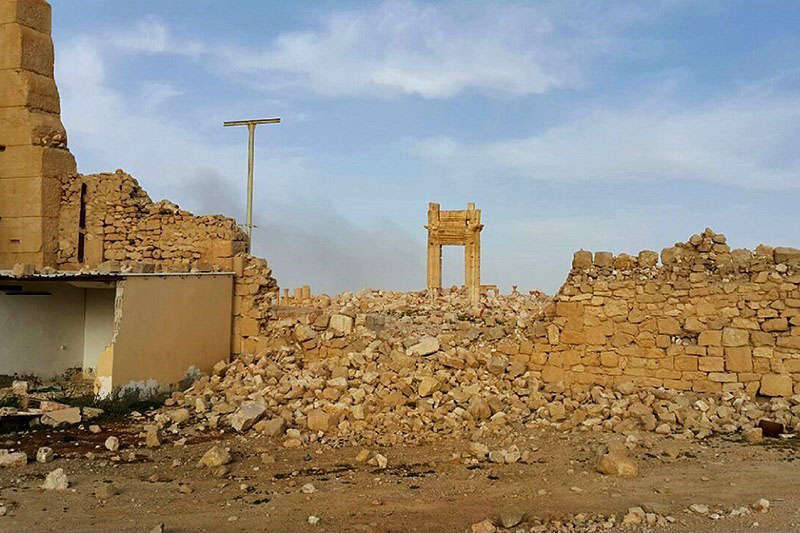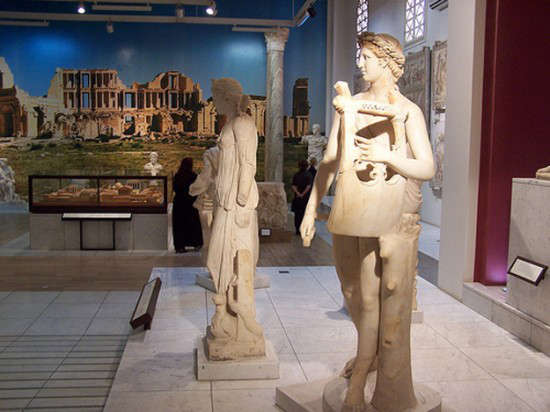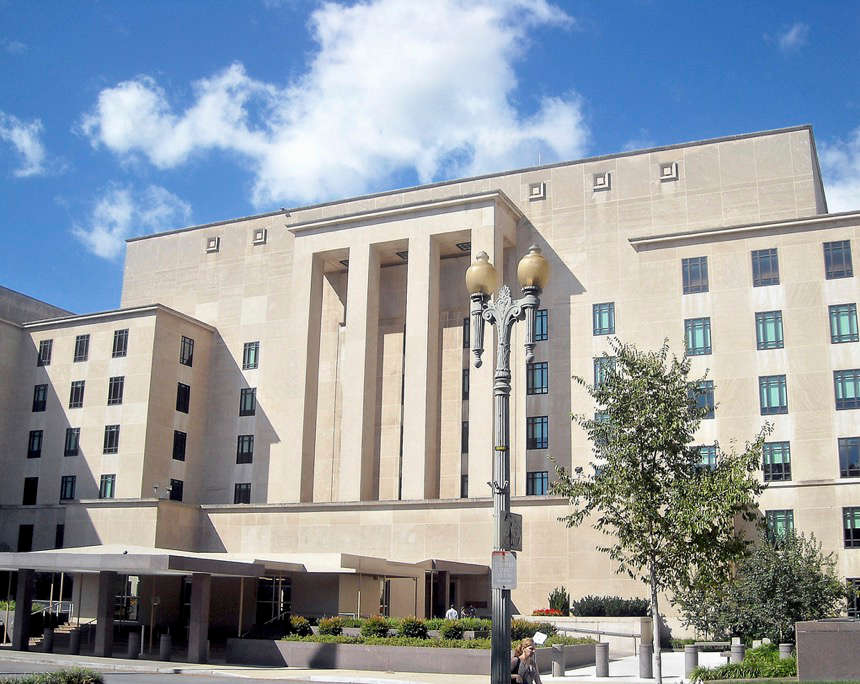Your Tax Dollars at Work
By Peter K. Tompa
Thanks to government largess lucrative new opportunities have arisen for a select few archaeologists working with U.S. State Department bureaucrats to help justify cultural property Memorandums of Understanding (MOUs) or “emergency import restrictions.” Not surprisingly, such work often draws those most committed to the view that cultural artifacts should be clawed back from U.S. collectors and museums for the benefit of countries that have been victimized in the past by Western colonialism. Most collectors, dealers and museum curators have no idea about all the State Department money that is funding this jihad against the private ownership of cultural goods in the U.S.
Content
The Evidence Maker
To date, the long-established American Society of Overseas Research (ASOR) has been a major grant recipient and “evidence maker” for some of the most difficult to justify MOUs.1 In particular, the State Department has heavily funded ASOR’s Cultural Heritage Initiatives which focuses on fighting looting in conflict zones like Syria and Libya.2 According to a report prepared by ASOR’s Executive Director for a 2022 board meeting, ASOR relies heavily on the $500,000-$700,000 it receives annually in State Department grants and contracts for its overall staffing purposes.3

The remains of the Baal Temple after its destruction by IS (2016). Image: Tasnim News Agency via Wikimedia Commons / CC BY 4.0.
Critics have wondered whether all this money has encouraged ASOR to concoct false or misleading narratives about the nature and extent of looting to help justify such major funding. In one instance, an archaeologist associated with ASOR, working under a $600,000 State Department contract, was identified as the source for a widely reported false claim that the ISIS terror group’s profits from antiquities looting were “second only to the revenue the group derives from illicit oil sales.4” In another case, ASOR’s Executive Director, working under a $800,000 contract, was criticized for rendering an overly rosy picture of Libya’s efforts to protect its own cultural patrimony to help justify a cultural property MOU with “the internationally recognized government of Libya,” which in fact represents only one faction in an ongoing civil war.5 A giveaway should have been the fact that Libya is so dangerous that the U.S. no longer operates an embassy within the country. Instead, U.S. officials engage Libyans and monitor U.S. aid programs from the Libya External Office which is physically located at the U.S. Embassy in Tunisia. Indeed, the ASOR report used to justify renewing the MOU with Libya was evidently prepared solely based on interviews with Libyan officials that were conducted in Tunis, Tunisia, not in Libya itself.6 Of course, no one associated with ASOR, or the State Department questioned whether it was appropriate to repatriate objects there if it was too dangerous to travel there.

Roman sculptures in Red Castle Museum, Tripoli 2012. Image: Libiya11 via Wikimedia Commons / CC BY-SA 3.0.
Sweetening the Deal With Taxpayer Money
ASOR may be the largest but is certainly not the only beneficiary of State Department largess. Other programs offer additional funding opportunities. For some time, ECA has also administered the “Ambassador’s Fund for Cultural Preservation.” The Ambassador’s Fund “supports projects to preserve a wide range of cultural heritage in less developed countries, including historic buildings, archaeological sites, ethnographic objects, paintings, manuscripts, and indigenous languages and other forms of traditional cultural expression.”7
The State Department acting as both decision maker and facilitator for cultural property MOUs raises other concerns. More recently, the State Department has dropped all pretense of following the intent of the CPIA by showering additional funding on archaeologists to facilitate new and renewed cultural property MOUs. As part of the limitations on executive authority built into the CPIA, Congress required that source countries “did their own homework” before asking the U.S. to agree to a cultural property MOU that would assist them to enforce their export controls. According to the CPIA, MOUs should only be processed after receiving detailed requests from source countries and only completed after these countries had undertaken their own “self-help” efforts to protect their own cultural heritage.8 However, lack of capacity or even motivation have proved to be obstacles, so in order to complete as many MOUs as possible, the State Department has “sweetened the deal” with more taxpayer money. Requests for MOUs have been funded with the help of the Antiquities Coalition (AC), another well-funded archaeological advocacy group that itself frequently lobbies both here and abroad for import restrictions and other regulations aimed at the antiquities trade and collectors.9 More recently, ECA and its Cultural Heritage Center announced $600,000 in “Cultural Property Agreement Implementation grants” which will offer awards worth from $80,000 to $150,000 to qualified institutions.10 The U.S. Embassies in Libya and Jordan offer detailed program requirements, indicating that grant money must be tied to implementing cultural property MOUs with these countries.11 One wonders if a “request” is really a “request” if it is manufactured with the help of contractors paid for by an archaeological advocacy group or if source countries are really engaged in “self-help” if it is funded, courtesy of the U.S. taxpayer.
It also remains an open question whether ASOR, the AC or any of the other archaeological advocacy groups that have advocated for MOUs and related import restrictions on cultural goods will also benefit financially from such additional State Department grants and contracts.
Certainly, however, all the taxpayer money the State Department has showered on ASOR and others to justify MOUs has had an effect. Only a limited number of MOUs covering only a limited number of types of objects were signed between 1983 and 1999, when MOUs were was administered by the U.S. Information Agency. Between 2000 and 2016, after the State Department took over administering the program, the number of countries with MOUs quadrupled with many more types of artifacts being covered. Since 2017, this number doubled again, to more than thirty nations, including MOUs with most Middle Easten dictatorships that recognize their rights to ownership and control of most everything old. But has all the money and all the MOUs really encouraged developing countries, especially in the Middle East, to “like us more?” Watching the nightly news should raise some doubts.
The Author
Peter K. Tompa is a semi-retired lawyer who resides in Washington, D.C. He has written extensively about cultural heritage issues, particularly those of interest to the numismatic trade. Peter contributed to “Who Owns the Past?” (K. Fitz Gibbon, ed. Rutgers 2005). He formerly served as executive director of the Global Heritage Alliance and now is a member of its board of directors. This article is a public resource for general information and opinion about cultural property issues and is not intended to be a source for legal advice. Any factual patterns discussed may or may not be inspired by real people and events.
Annotations
(1) ASOR describes itself as a non-profit 501(c)(3) organization “whose mission is to initiate, encourage, and support research into, and public understanding of, the history and cultures of the Near East and wider Mediterranean world, from the earliest times.” See About ASOR, ASOR Website, available at https://www.asor.org/about-asor/ (last visited December 27, 2023). Before its rebranding, in a less politically correct era, ASOR was an acronym for “American Schools of Oriental Research.”
(2) About ASOR Cultural Heritage Initiatives, ASOR Website, available at https://www.asor.org/chi/about (last visited December 27, 2023).
(3) Executive Director’s Report, November 2022 Board Meeting at 6.
(4) Jason Felch, Danti’s Inference: The Known Unknowns Of ISIS and Antiquities Looting, Chasing Aphrodite Blog (November 18, 2014), available at https://chasingaphrodite.com/2014/11/18/dantis-inference-the-known-unknowns-of-isis-and-antiquities-looting/ (last visited December 27, 2023).
(5) Peter K. Tompa, Summary of July 26, 2022, Cultural Property Advisory Committee Meeting to Discuss Proposed MOU Renewals with Belize and Libya, Cultural Property Observer (July 28, 2022), available at https://culturalpropertyobserver.blogspot.com/2022/07/summary-of-july-26-2022-cultural.html (last visited December 27, 2023).
(6) Letter of Andrew G. Vaughn, Ph.D., ASOR Executive Director, to Cultural Heritage Center (July 19, 2022) at 1, posted as Public Submission, Comment ID DOS-2022-0015-0051, Regulations.gov, Docket DOS-2022-0015-0001, available at https://www.regulations.gov/comment/DOS-2022-0015-0051 (last visited December 28, 2023).
(7) Ambassadors Fund for Cultural Preservation, United States Department of State, Bureau of Educational and Cultural Affairs Website, available at https://eca.state.gov/cultural-heritage-center/ambassadors-fund-cultural-preservation (last visited December 27, 2023).
(8) CPIA, 19 U.S.C. §§ 2602 (a)(1)(b), (a)(3).
(9) The AC maintains an elaborate website, paid staff, and an extensive social media presence. It organizes national and international conferences and lobbies extensively. It appears to be largely funded by its President, Deborah Lehr, who is an international business consultant married to one of the top partners at Goldman Sachs.
(10) FY23 Cultural Property Agreement Implementation Grants, Federal Grants website, available at https://www.federalgrants.com/FY23-Cultural-Property-Agreement-Implementation-Grants-93220.html (last visited December 27, 2023).
(11) CULTURAL PROPERTY AGREEMENT IMPLEMENTATION GRANTS 2024, U.S. Embassy Libya (December 1, 2023), available at https://ly.usembassy.gov/cultural-property-agreement-implementation-grants/ (last visited December 27, 2023) (“Projects must contribute to the implementation of provisions in emergency determinations or cultural property agreements between the United States and foreign governments.”); The Cultural Property Agreement Implementation Grant (CPAIG), application for 2023 Grants Program is now open, U.S. Embassy Jordan (December 18, 2022), available at https://jo.usembassy.gov/the-cultural-property-agreement-implementation-grant-cpaig-application-for-2023-grants-program-is-now-open/ (last visited December 27, 2023) (“CPAIG projects must directly support the implementation of the bilateral cultural property agreement between the United States and Jordan.”).






